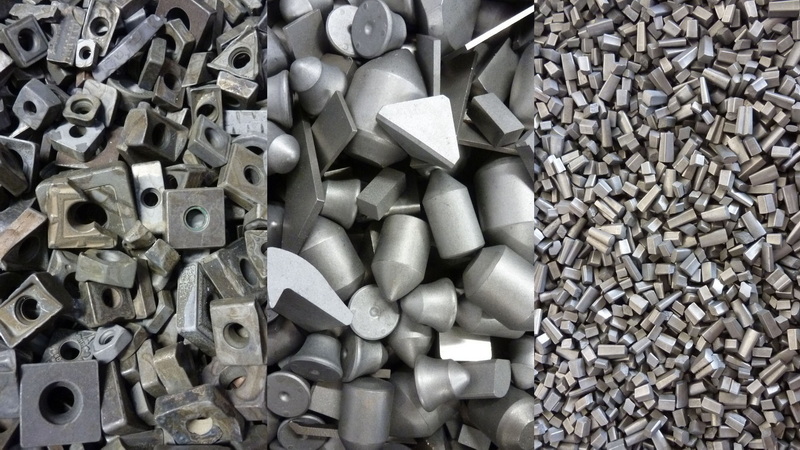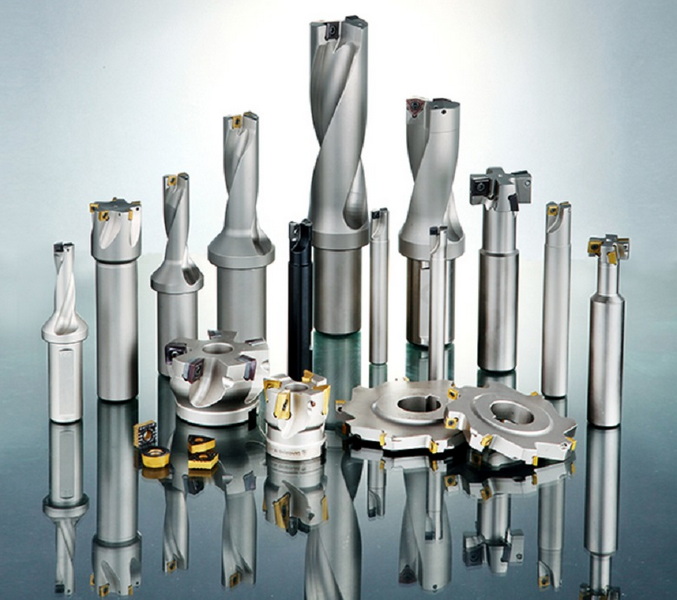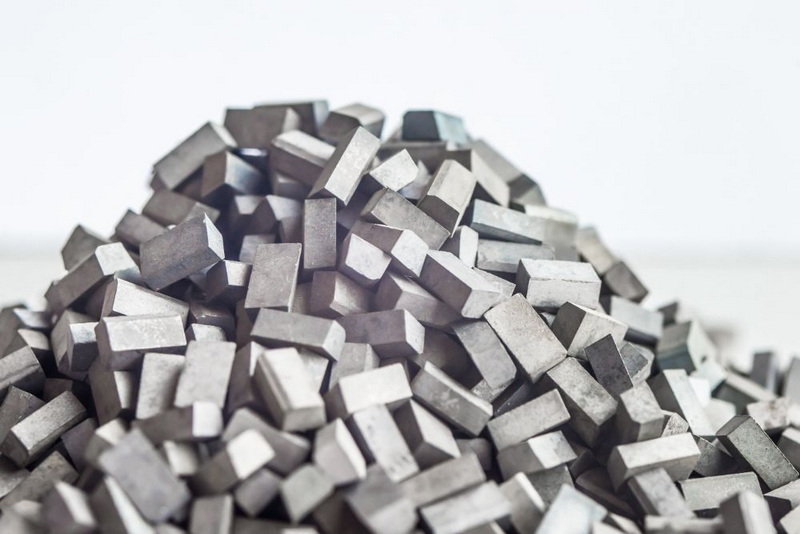Content Menu
● Introduction to Tungsten Carbide
● Physical Properties of Tungsten Carbide
● Chemical Properties of Tungsten Carbide
● Mechanical Properties
● Applications of Tungsten Carbide
>> Aerospace and Aviation
>> Oil and Gas Industry
>> Manufacturing
>> Jewelry
>> Construction
● Advantages of Tungsten Carbide
● Limitations of Tungsten Carbide
● Future Trends in Tungsten Carbide Applications
>> Nanostructured Tungsten Carbide
>> Additive Manufacturing
>> Sustainable Practices
● Conclusion
● FAQ
>> 1. What is tungsten carbide made of?
>> 2. How hard is tungsten carbide?
>> 3. What are some common uses for tungsten carbide?
>> 4. Is tungsten carbide resistant to corrosion?
>> 5. Can tungsten carbide be recycled?
● Citations:
Tungsten carbide (WC) is a remarkable material known for its unique properties and widespread applications. This article explores the various characteristics of tungsten carbide, including its physical and chemical properties, its industrial applications, and the reasons behind its popularity across different sectors.

Introduction to Tungsten Carbide
Tungsten carbide is a chemical compound consisting of equal parts tungsten and carbon atoms. It is typically found in a fine gray powder form, which can be compacted and shaped through sintering—a process that involves heating the powder without melting it. The resulting material is exceptionally hard and dense, making it suitable for various demanding applications.
Physical Properties of Tungsten Carbide
Tungsten carbide possesses several notable physical properties:
- Hardness: It ranks between 9 and 9.5 on the Mohs scale, making it one of the hardest materials available, second only to diamond.
- Density: With a specific gravity of approximately 15.6, tungsten carbide is about twice as dense as steel.
- Melting Point: It has an extremely high melting point of around 2,870 °C (5,200 °F), which allows it to maintain structural integrity under high-temperature conditions.
- Young's Modulus: The material exhibits a Young's modulus in the range of 530 to 700 GPa, indicating that it is significantly stiffer than steel.
- Thermal Conductivity: Tungsten carbide has a thermal conductivity of about 110 W/m·K, which is higher than many other materials used in industrial applications.
Chemical Properties of Tungsten Carbide
Tungsten carbide demonstrates several important chemical properties:
- Oxidation Resistance: It does not oxidize at normal temperatures but begins to oxidize at approximately 300 °C (572 °F) and reacts rapidly at around 700 °C (1,292 °F).
- Chemical Stability: Tungsten carbide is stable in various environments and does not dissolve in water or common acids like hydrochloric acid or sulfuric acid; however, it can dissolve in nitric acid.
- Reactivity: It reacts with fluorine gas at room temperature and with chlorine at elevated temperatures (above 400 °C) but remains unreactive to dry hydrogen up to its melting point.
Mechanical Properties
The mechanical properties of tungsten carbide contribute significantly to its utility:
- Compressive Strength: It exhibits compressive strength higher than most melted or cast metals, making it ideal for heavy-duty applications.
- Toughness: Despite its hardness, tungsten carbide maintains toughness, allowing it to withstand impact without fracturing.
- Wear Resistance: Its exceptional wear resistance makes it suitable for use in tools that encounter abrasive materials.
Applications of Tungsten Carbide
Tungsten carbide's unique properties make it invaluable across various industries:
Aerospace and Aviation
Tungsten carbide coatings are used to protect critical components in aerospace applications, such as turbine blades and compressor seals. These coatings enhance durability against wear and erosion under extreme conditions. In addition to coatings, tungsten carbide is also used in manufacturing precision components that require high strength-to-weight ratios.
Oil and Gas Industry
In this sector, tungsten carbide is employed to coat drilling equipment and production components. Its wear resistance extends the life of drill bits and valves operating in abrasive environments. Moreover, tungsten carbide inserts are used in downhole tools where high impact resistance is crucial.
Manufacturing
Tungsten carbide tools are extensively used in metal forming processes due to their hardness and resistance to wear. This includes cutting tools like drills and milling cutters that can operate at high speeds without degrading. The ability to maintain sharp edges over extended periods reduces downtime for tool changes and increases productivity.
Jewelry
The aesthetic appeal combined with durability has made tungsten carbide a popular choice for wedding bands and fashion jewelry. Its scratch-resistant surface ensures long-lasting shine. Additionally, the material can be polished to a high luster or finished with various textures for unique designs.
Construction
In construction, tungsten carbide is utilized in drill bits and saw blades due to its ability to penetrate hard materials like concrete and asphalt effectively. Its application extends to mining operations where it is used in tools designed for drilling into rock formations.

Advantages of Tungsten Carbide
The advantages of tungsten carbide over other materials are numerous:
- Longevity: Due to its hardness and wear resistance, tungsten carbide tools often last significantly longer than those made from other metals.
- Cost-Effectiveness: Although the initial investment may be higher, the longevity of tungsten carbide tools leads to lower overall costs due to reduced replacement frequency.
- Versatility: Tungsten carbide can be manufactured into various shapes and sizes, allowing for customization according to specific industrial needs.
Limitations of Tungsten Carbide
Despite its many advantages, tungsten carbide also has some limitations:
- Brittleness: While tough under compression, tungsten carbide can be brittle under tension or impact if not properly engineered.
- Weight: Its high density makes it heavier than many alternative materials, which may be a consideration in certain applications where weight savings are crucial.
- Cost: The manufacturing process for tungsten carbide can be more expensive compared to other materials like high-speed steel or ceramics.
Future Trends in Tungsten Carbide Applications
As technology continues to evolve, the applications for tungsten carbide are expanding:
Nanostructured Tungsten Carbide
Research into nanostructured tungsten carbide shows promise for improving its mechanical properties further. By manipulating the microstructure at the nanoscale level, scientists aim to create even tougher and more wear-resistant materials suitable for advanced industrial applications.
Additive Manufacturing
The rise of additive manufacturing (3D printing) presents new opportunities for tungsten carbide use. By developing methods for 3D printing with tungsten carbide composites, manufacturers could produce complex geometries that were previously impossible with traditional machining techniques.
Sustainable Practices
With increasing emphasis on sustainability, recycling processes for tungsten carbide are being refined. The ability to reclaim tungsten from worn-out tools not only reduces waste but also lowers the environmental impact associated with mining new materials.
Conclusion
Tungsten carbide is a highly versatile material characterized by its exceptional hardness, density, thermal stability, and chemical resistance. These properties make it suitable for a wide range of applications across industries such as aerospace, oil and gas, manufacturing, jewelry making, and construction. As technology advances, the demand for tungsten carbide continues to grow due to its ability to enhance performance in challenging environments.

FAQ
1. What is tungsten carbide made of?
Tungsten carbide is composed of equal parts tungsten and carbon atoms.
2. How hard is tungsten carbide?
It ranks between 9 and 9.5 on the Mohs scale, making it one of the hardest materials available.
3. What are some common uses for tungsten carbide?
Common uses include cutting tools, jewelry, aerospace components, oil drilling equipment, and construction tools.
4. Is tungsten carbide resistant to corrosion?
Yes, tungsten carbide exhibits excellent corrosion resistance but can oxidize at high temperatures.
5. Can tungsten carbide be recycled?
Yes, tungsten carbide can be recycled through various processes that recover the tungsten content from worn-out tools.
Citations:
[1] https://www.allied-material.co.jp/en/techinfo/tungsten_carbide/features.html
[2] https://www.linde-amt.com/resource-library/articles/tungsten-carbide
[3] https://www.allied-material.co.jp/dcms_media/image/use_tungsten_carbide_06.jpg?sa=X&ved=2ahUKEwjzv-zLtqWLAxUqKlkFHVV8BJsQ_B16BAgMEAI
[4] https://www.carbideprobes.com/wp-content/uploads/2024/01/TungstenCarbideDataSheet.pdf
[5] https://en.wikipedia.org/wiki/Tungsten_carbide
[6] https://www.itia.info/applications-markets/
[7] https://www.dymetalloys.co.uk/what-is-tungsten-carbide/tungsten-carbide-grades-applications
[8] https://arxiv.org/pdf/1011.5973.pdf
[9] https://www.carbideprobes.com/wp-content/uploads/2019/07/TungstenCarbideDataSheet.pdf
[10] https://eurobalt.net/blog/2022/03/28/all-the-applications-of-tungsten-carbide/
[11] https://carbideprocessors.com/pages/carbide-parts/tungsten-carbide-properties.html
[12] https://www.sollex.se/en/blog/post/about-cemented-tungsten-carbide-applications-part-1
[13] https://www.tungco.com/insights/blog/5-tungsten-carbide-applications/
[14] https://www.carbide-usa.com/top-5-uses-for-tungsten-carbide/
















